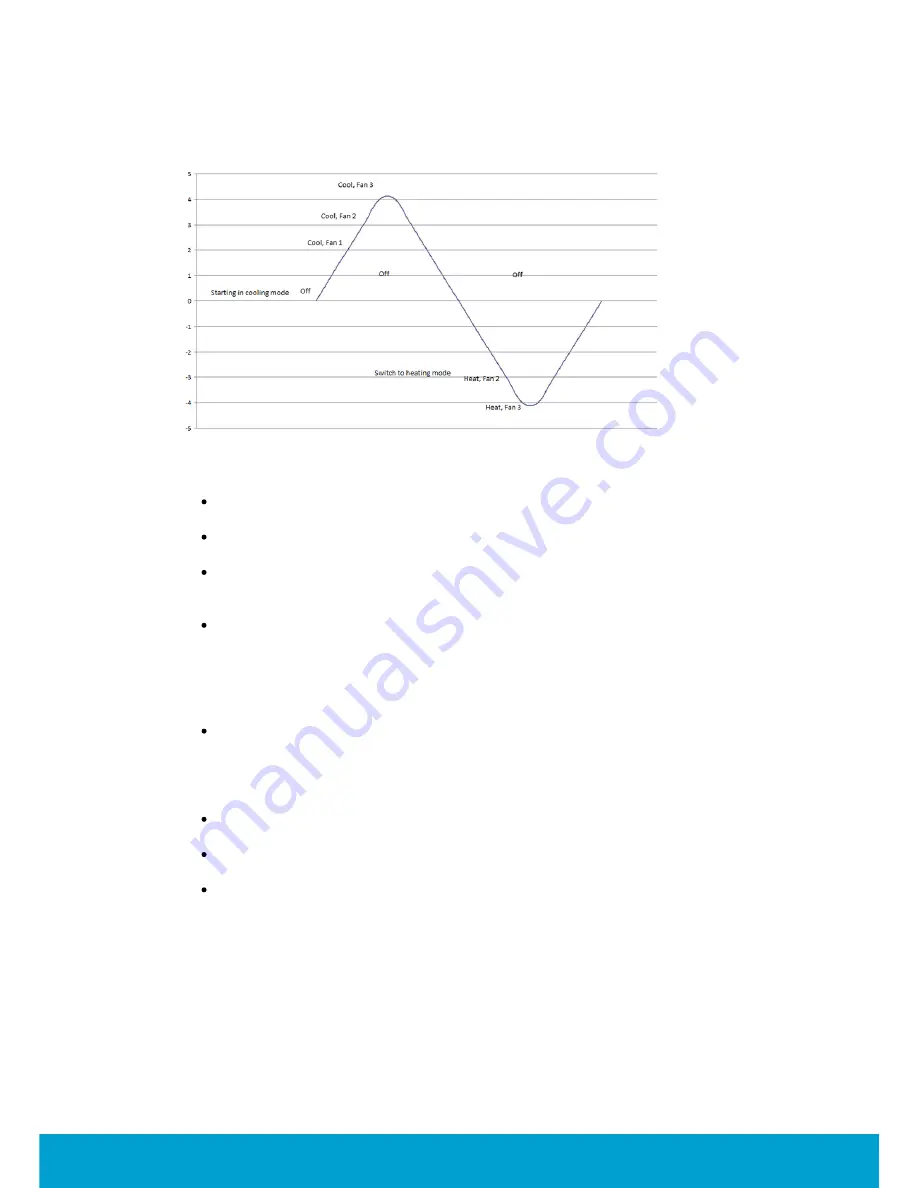
18
ASSA ABLOY Hospitality
66 8003 015-3
1.6.6 Thermostat control chart
Figure 5
The thermostat control can be illustrated in a control chart, see example above.
If the temperature drifts above the setpoint or setback (depending on occupancy
mode), the HVAC starts in cooling mode.
The thermostat deadband is in this case 2 ºF, so when the temperature is within
2 ºF from the setpoint the HVAC is off (from 0 to 2 in the picture).
If the temperature continues to rise, the thermostat output for ‘Fan 1/Low’
is triggered, then the output for ‘Fan 2/Medium’ and finally the output for
‘Fan 3/High’.
If the temperature starts dropping, the HVAC then switches to heating mode.
There is however a heat/cool switch deadband which in this example is 3 ºF,
so the temperature is allowed to drift 3 ºF from the setpoint before the HVAC
switches from cooling mode to heating mode. From 0 to -3 in the picture the
HVAC is off; the output for ‘Fan 1/Low’ is therefore not triggered, since this
would have been at -2.
If the temperature continues to drop, first the output for ‘Fan 2/Medium’ is
triggered and then the output for ‘Fan 3/High’.
The Orion EMS devices strive towards different temperatures depending on if the
room is occupied, unoccupied or unsold.
For ‘occupied mode’ the goal is the setpoint, i.e. the temperature which the
guest has set on the thermostat.
For ‘unoccupied mode’ the temperature drifts to the unoccupied setback,
which can be static or dynamic.
For ‘unsold mode’ the temperature drifts to the unsold setback.






























